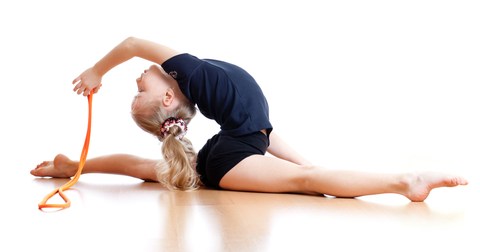Does Olympic Training Stunt Gymnasts’ Growth?

Article written by guest writer Kecia Lynn
What’s the Latest Development?
Despite what some of us may think as we watch gymnasts flinging themselves off uneven bars and balance beams , it turns out that there is no clear answer as to whether their prepubescent physical appearance is an inevitable result of hard training. Over 40 years of research done at the University of Texas-Austin showed that most studies that attempted to draw a correlation between rigorous physical exercise and puberty onset omitted important factors such as genetics and age. Despite these flaws, the studies provide interesting insights as to how young athletes are affected by demanding training conditions.
What’s the Big Idea?
Evidence exists that support both sides of the argument. According to one 1980 study, “by age 4, most gymnasts were already trailing their peers in height,” suggesting that gymnasts are shorter due to genetics, not training. Other studies support the notion that “gymnasts who drop out grow taller and mature earlier than those who persist.” Researchers point to other, less-tangible factors that could affect performance, including the pressures put on young girls by a gymnasium environment often dominated by adult men. Injuries sustained often aren’t reported until they become serious; knees, shoulders, and ankles are especially vulnerable. Fortunately it seems most gymnasts do not suffer long-term consequences once they retire from performing, although one superstar, Mary Lou Retton, acknowledges that her hip problems, while genetic, may have been accelerated as a result of gymnastics.
Photo Credit: Shutterstock.com




